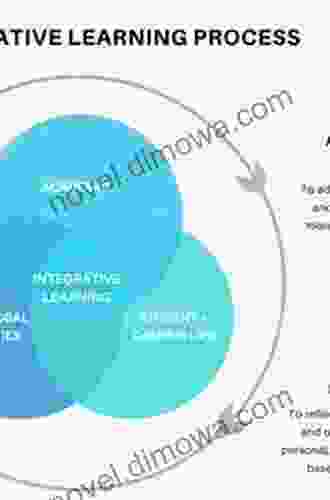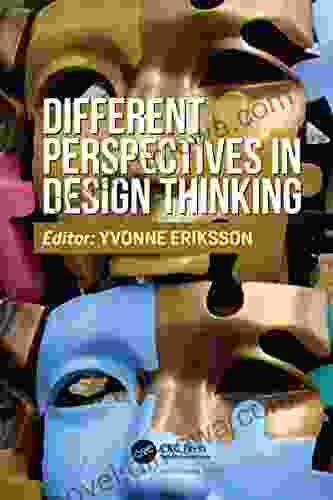Different Perspectives In Design Thinking: Unlocking Innovative Solutions

In the realm of design, embracing diverse perspectives is essential to fostering creativity and driving innovation. The concept of design thinking revolves around the notion that by considering multiple viewpoints and experiences, designers can gain a comprehensive understanding of complex problems and develop solutions that are both effective and user-centered.
This extensive article delves into the various perspectives that contribute to design thinking, highlighting the benefits and challenges of each. By understanding the unique strengths and limitations of different perspectives, designers can harness their collective knowledge and expertise to create transformative and inclusive designs.
1. User Perspective: Human-Centered Focus
At the heart of design thinking lies the user perspective. By placing the needs, wants, and aspirations of users at the forefront of the design process, designers can create products, services, and experiences that are tailored to real-world scenarios.
4.1 out of 5
| Language | : | English |
| File size | : | 11081 KB |
| Screen Reader | : | Supported |
| Print length | : | 250 pages |
Benefits:
- Empathy and understanding: Gaining insights into users' motivations, behaviors, and pain points fosters empathy and a deep understanding of their needs.
- User-centric solutions: Designs are specifically tailored to the target users, ensuring that they meet their unique requirements and preferences.
- Increased user satisfaction: By involving users in the design process, designers can gather feedback and iterate on solutions to enhance user satisfaction.
Challenges:
- Data limitations: Gathering accurate and comprehensive user data can be challenging, especially in cases where users are not easily accessible.
- Bias: Designers may subconsciously introduce their own biases into the design process, which can limit the diversity of perspectives considered.
- Time constraints: Involving users in the design process can be time-consuming, especially for projects with tight deadlines.
2. Business Perspective: Commercial Viability
The business perspective is crucial for ensuring that design solutions align with commercial objectives and market demands. By considering factors such as profitability, scalability, and sustainability, designers can create products and services that are both desirable and financially viable.
Benefits:
- Market alignment: Designs are informed by market research and analysis, ensuring that they meet the needs of target customers.
- Financial success: Designers can optimize solutions for profitability, maximizing the return on investment for businesses.
- Scalability: Considering business constraints and growth potential allows designers to create solutions that can be scaled to meet future demands.
Challenges:
- Short-term focus: Business perspectives may prioritize immediate profits over long-term sustainability and user experience.
- Market volatility: Market conditions can change rapidly, making it difficult to design solutions that remain commercially viable over time.
- Balancing creativity: Designers must navigate the tension between commercial viability and artistic expression to create solutions that are both profitable and innovative.
3. Technological Perspective: Embracing Innovation
The technological perspective encompasses the advancements and limitations of technology and its impact on design. By leveraging emerging technologies and understanding their capabilities, designers can create solutions that push the boundaries of what is possible.
Benefits:
- Enhanced functionality: Designers can incorporate new technologies to enhance product features, improve usability, and create novel experiences.
- Competitive advantage: Embracing technological advancements can give businesses a competitive advantage in the marketplace.
- Future-proofing: By considering technological trends, designers can create solutions that are adaptable to future technological advancements.
Challenges:
- Rapid obsolescence: Technology can become obsolete quickly, making it difficult to design solutions that remain relevant over time.
- Compatibility issues: Balancing compatibility with legacy systems and emerging technologies can pose challenges for designers.
- Ethical considerations: Designers must address ethical concerns related to technology use, such as privacy, security, and potential social impacts.
4. Environmental Perspective: Sustainability and Inclusivity
The environmental perspective emphasizes the impact of design on the environment and the promotion of inclusivity. By considering sustainable practices, accessibility, and diversity, designers can create solutions that benefit both society and the planet.
Benefits:
- Reduced environmental impact: Designs can minimize waste, conserve resources, and reduce carbon emissions, promoting environmental sustainability.
- Increased inclusivity: Designers can create solutions that are accessible and usable by individuals with diverse abilities, backgrounds, and experiences, fostering inclusivity.
- Positive social impact: Designs can address societal challenges, such as inequality, poverty, and health disparities, contributing to positive social change.
Challenges:
- Cost implications: Implementing sustainable practices and inclusive design features can increase production costs, which may conflict with business objectives.
- Limited awareness: Raising awareness about the importance of environmental and inclusive design can be challenging.
- Balancing competing priorities: Designers must carefully balance environmental and inclusive considerations with other design goals to create holistic solutions.
5. Cultural Perspective: Embracing Diversity
The cultural perspective acknowledges the influence of cultural values, beliefs, and traditions on design. By understanding cultural contexts and incorporating cultural insights, designers can create solutions that are relevant and meaningful to users from diverse backgrounds.
Benefits:
- Increased user acceptance: Designs that resonate with cultural norms and values are more likely to be accepted and adopted by users.
- Enhanced user experience: By incorporating cultural elements, designers can create solutions that are familiar and enjoyable to users from different cultures.
- Global appeal: Designs that embrace cultural diversity can appeal to a wider audience, expanding market opportunities for businesses.
Challenges:
- Cultural bias: Designers may unknowingly introduce their own cultural biases into the design process, limiting the diversity of perspectives considered.
- Cultural sensitivity: Navigating cultural differences requires sensitivity and respect to avoid causing offense or perpetuating stereotypes.
- Complexity: Designing solutions that cater to multiple cultural contexts can be complex and time-consuming, requiring extensive research and collaboration.
: Synergy Through Diverse Perspectives
Design thinking thrives on the synergy created by embracing multiple perspectives. By considering the user, business, technological, environmental, and cultural perspectives, designers can gain a comprehensive understanding of problems and develop solutions that are both innovative and effective.
Understanding the benefits and challenges of each perspective empowers designers to navigate the complexities of the design process with confidence. By fostering a culture of collaboration and diversity, designers can harness the collective knowledge and expertise of their team to create transformative solutions that shape a better future for all.
In an era where innovation is the key to success, embracing different perspectives in design thinking is not merely an option but a necessity. By unlocking the power of diverse viewpoints, designers can push the boundaries of possibility and create a world where design empowers, connects, and inspires.
4.1 out of 5
| Language | : | English |
| File size | : | 11081 KB |
| Screen Reader | : | Supported |
| Print length | : | 250 pages |
Do you want to contribute by writing guest posts on this blog?
Please contact us and send us a resume of previous articles that you have written.
 Book
Book Novel
Novel Page
Page Chapter
Chapter Text
Text Story
Story Genre
Genre Reader
Reader Library
Library Paperback
Paperback E-book
E-book Magazine
Magazine Newspaper
Newspaper Paragraph
Paragraph Sentence
Sentence Bookmark
Bookmark Shelf
Shelf Glossary
Glossary Bibliography
Bibliography Foreword
Foreword Preface
Preface Synopsis
Synopsis Annotation
Annotation Footnote
Footnote Manuscript
Manuscript Scroll
Scroll Codex
Codex Tome
Tome Bestseller
Bestseller Classics
Classics Library card
Library card Narrative
Narrative Biography
Biography Autobiography
Autobiography Memoir
Memoir Reference
Reference Encyclopedia
Encyclopedia Wendy Leighton Porter
Wendy Leighton Porter Willy Thorn
Willy Thorn Tessa Gratton
Tessa Gratton S D Hollick
S D Hollick Stuart Wilder
Stuart Wilder Leslie E Ballentine
Leslie E Ballentine Soo Park
Soo Park Stacy Deanne
Stacy Deanne Laurie Elish Piper
Laurie Elish Piper Sarah Dunn
Sarah Dunn Zoey Ellis
Zoey Ellis Jennifer Haley
Jennifer Haley Roy G Geronemus
Roy G Geronemus Sahoko Kaji
Sahoko Kaji Stewart Lewis
Stewart Lewis Sheritta Bitikofer
Sheritta Bitikofer Karla Gracey
Karla Gracey Sarah Blakley Cartwright
Sarah Blakley Cartwright Alison Johnson
Alison Johnson Sardar Singh
Sardar Singh
Light bulbAdvertise smarter! Our strategic ad space ensures maximum exposure. Reserve your spot today!

 D'Angelo CarterDeath at 9500 Feet Compu Quarterly: A Thrilling Ascent into the Realm of...
D'Angelo CarterDeath at 9500 Feet Compu Quarterly: A Thrilling Ascent into the Realm of...
 Manuel ButlerMastodon: An Enthralling Journey into the Depths of Thirty Three Fathoms Cave
Manuel ButlerMastodon: An Enthralling Journey into the Depths of Thirty Three Fathoms Cave
 Dalton FosterSummary Study Guide for The Naked Sun: Your Key to Exploring Isaac Asimov's...
Dalton FosterSummary Study Guide for The Naked Sun: Your Key to Exploring Isaac Asimov's...
 Tony CarterWhite Lines II: Sunny Novel – A Thrilling Adventure That Will Captivate Your...
Tony CarterWhite Lines II: Sunny Novel – A Thrilling Adventure That Will Captivate Your...
 Guy PowellStep-by-Step Guide to Selecting the Gear, Learning the Strokes, and Planning...
Guy PowellStep-by-Step Guide to Selecting the Gear, Learning the Strokes, and Planning... Leslie CarterFollow ·16.9k
Leslie CarterFollow ·16.9k Zachary CoxFollow ·4.6k
Zachary CoxFollow ·4.6k Stan WardFollow ·10.1k
Stan WardFollow ·10.1k Mitch FosterFollow ·7.1k
Mitch FosterFollow ·7.1k Curtis StewartFollow ·11.7k
Curtis StewartFollow ·11.7k Timothy WardFollow ·17.2k
Timothy WardFollow ·17.2k John ParkerFollow ·2.4k
John ParkerFollow ·2.4k Darren BlairFollow ·13.8k
Darren BlairFollow ·13.8k

 Leo Mitchell
Leo MitchellRide the Waves with "Surfer Girl" by Tricia De Luna: A...
Prepare to be...

 William Faulkner
William FaulknerCecil Griffiths: The Exiled Olympic Champion
Cecil Griffiths was...

 Cortez Reed
Cortez ReedLilly Blue Iris Stanley Gene: A Captivating Literary...
Enter a Realm of...

 Art Mitchell
Art MitchellFrom Vision to Implementation: An Integrative Approach to...
Unleash the Power...

 William Powell
William PowellDiscover the Heartwarming Journey of a Grandfather and...
In a quaint little town nestled amidst...
4.1 out of 5
| Language | : | English |
| File size | : | 11081 KB |
| Screen Reader | : | Supported |
| Print length | : | 250 pages |




